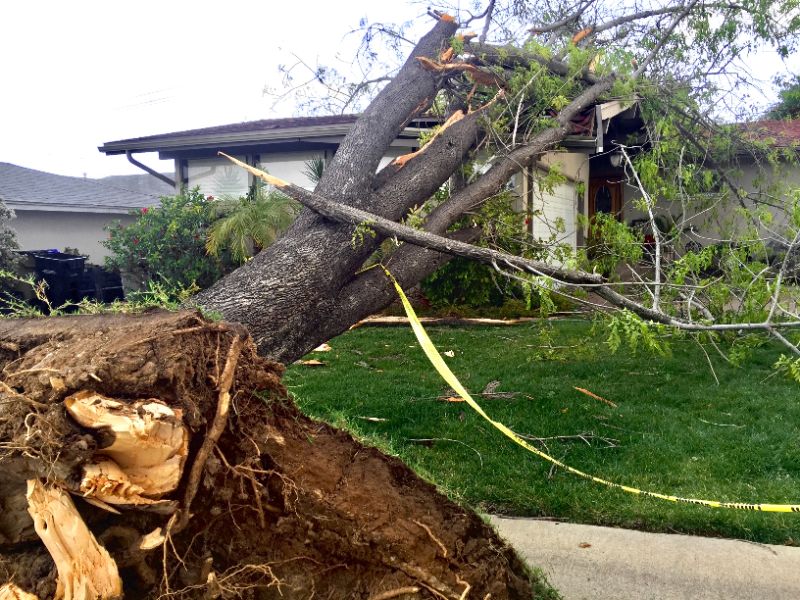Racing the Clock: Texas Homeowners Feel the Six-Year Squeeze
Imagine coming home to a dream house built during the Texas property development boom, only to find a severe structural crack seven years later. You’d expect to hold the builder accountable—until you learn a recent law slammed the window shut at six years. This isn’t a nightmare scenario; it’s a real possibility many Texans face under a new law that’s sparking a “legal land rush.”
Texas is experiencing an unprecedented construction surge. In fact, Texas accounted for about 15% of all new-home building permits in the U.S. in 2024, highlighting a Texas construction law land rush fueled by rapid growth. With so many new homes going up across the Lone Star State, issues are bound to emerge. We empathize: if you’re dealing with leaks, cracks, or other construction defects, you’re not alone—and now the clock is ticking faster than ever.
This six-year deadline has put homeowners and builders on high alert. Why the rush? A recent change in Texas law shortened the time you have to pursue claims for construction defects from the long-standing 10 years down to 6 years in many cases. In other words, Texas’s new construction law has created a frantic race against time for homeowners to assert their rights—hence the “land rush” of legal activity. Let’s break down what this law means, why it was enacted, and how it impacts Texas residents like you.
If your Texas home is showing signs of faulty construction, JCE Law Group is here to help you act before it’s too late. We guide homeowners through warranty claims, legal notices, and lawsuits—all while keeping your deadlines protected. Call us today at (504) 754-5884 or visit Contact Us for a free consultation. With the six-year limit now law, every month matters—don’t lose your right to recover.

Understanding Texas’s New Six-Year Rule (and What It Means for You)
The legal change behind this rush is House Bill 2024 (2023), which amended Texas Civil Practice & Remedies Code §16.009. In plain English, Texas introduced a special rule that shortens the deadline to sue over construction defects to six years for many new homes. This type of deadline is known as a statute of repose – essentially, the ultimate cutoff after a project’s completion by which any lawsuits must be filed, no matter when problems are discovered. (It’s different from the statute of limitations, which is usually the period after you find out a problem; we’ll clarify that shortly.)
For nearly 50 years, Texas homeowners had up to 10 years after construction to bring claims for hidden defects. That’s now been squeezed to 6 years in some instances, thanks to the new law. Here are the key points simplified:
-
The Old Rule: You generally had 10 years from the time a construction project was finished (your home built or renovation completed) to file a lawsuit for any construction defects. This 10-year “statute of repose” was like a long-stop deadline beyond which builders and contractors were off the hook.
-
The New Rule: If your builder provided a qualified written warranty, the deadline shrinks to 6 years. To qualify, the warranty must cover at least 1 year for workmanship and materials, 2 years for systems like plumbing and electrical, and 6 years for major structural components. These warranty terms were set by the law itself. In essence, the legislature is saying: if the builder backs their work with these minimum warranty periods, they get the benefit of cutting off liability after six years.
-
What Types of Homes? This six-year squeeze mainly affects single-family houses, duplexes, and townhomes up to three stories tall. So if you own a typical house or two-unit dwelling built under a qualifying warranty, you fall under the new 6-year rule. (Large condo buildings or multi-unit apartments generally don’t meet that definition and likely still have the whole 10-year period, unless they fit the townhouse/duplex criteria.)
-
Effective Date: The law took effect on June 9, 2023, and generally applies to projects and contracts from that date forward. If your home’s construction contract was signed before then, or if the builder didn’t give the specified warranty, the older 10-year period might still apply to you. Many homeowners aren’t sure which category their property falls into – checking your closing documents or warranty booklet can clarify this.
In plain language: Texas lawmakers have essentially tightened the time limit for homeowners to pursue legal action over construction defects. The goal (from the builders’ perspective) was to reduce prolonged liability and encourage builders to provide standard warranties. But for homeowners, it means you have to be much more vigilant and act faster when something seems wrong.
Timeline of a Construction Defect Claim in Texas
To understand how quickly the clock runs out, let’s walk through a simplified timeline of a construction defect scenario under the new law:
-
Home Completion (Year 0): The clock starts at substantial completion of the construction. Let’s say your newly built Texas home was finished on January 1, 2024. If a qualifying warranty was provided, your deadline to file any lawsuit is January 1, 2030 (6 years from completion). Mark this date – it’s critical.
-
Latent Defects Period (Years 1–5): During the first few years, everything might seem fine. Many defects are latent, meaning hidden problems that might not become apparent for years. For example, underground plumbing may slowly leak, or foundation soil might settle gradually. Pro tip: Don’t assume no news is good news. Schedule a thorough inspection around the 5-year mark, even if nothing is obviously wrong. Catching issues early is key.
-
Warning Signs Appear (Year 5 or 6): Suppose at Year 5 you notice cracks in the drywall, or at Year 6 a roof leak starts. Under the new six-year rule, you must move quickly. Texas also has a Residential Construction Liability Act (RCLA) that requires homeowners to give the builder formal written notice of defects and a chance to fix them before suing (outlined in Texas Property Code Chapter 27). This pre-suit process can easily take a few months as you exchange notices, inspections, and repair offers. Fortunately, Texas law extends your deadline by one extra year if you send a written notice of your claim within the initial period. In practice, that means if you alert the builder in writing about the defect during year 6, you could have until year 7 actually to file the lawsuit. Bottom line: Don’t delay – start the process as soon as you see a serious issue.
-
Deadline (Year 6 or 7): By the 6-year anniversary of the home’s completion (in our example, January 2030), your right to file a lawsuit generally expires. If you properly initiated a claim earlier (per RCLA’s requirements), you might have that extra time (until year 7) to get to court. After that, if no suit is filed, the builder is off the hook no matter what. This is the “squeeze” – any defects discovered after this point are essentially your burden unless an exception applies.
-
Exceptions (Beyond Year 6): There are limited exceptions to the statute of repose. For instance, if a builder fraudulently concealed a defect or engaged in willful misconduct to hide a problem, they can’t use the deadline as a shield. Also, if the builder’s contract explicitly promised a longer warranty or effective period, that agreement can extend your rights. These situations can be complex and challenging to prove, so they’re not a sure bet.
By understanding this timeline, you can see why many are calling the situation a Texas construction law land rush – homeowners are essentially racing to spot defects and take action before the land of legal recourse vanishes under their feet.
What Homeowners Can Do: Resolving Construction Defects Under the Six-Year Deadline
Discovering a significant defect in your home—like a shifting foundation or water intrusion—can be scary. The good news is you do have options to get it resolved, even with the new compressed timeline. The key is to be proactive and informed. Here are the possible resolutions and steps for Texas homeowners dealing with construction-related property damage:
-
1. Leverage Your Warranty: First, check if the builder’s warranty is still active. Many reputable Texas builders provide warranties (often through third-party companies) that may cover structural defects for up to 6 or 10 years. If you’re within that coverage, file a claim through the warranty program. This can sometimes get repairs done without a fight. Just be mindful: using the warranty doesn’t necessarily extend the legal deadline to sue, so keep that in mind if the repairs aren’t satisfactory.
-
2. Follow the Required Dispute Process: Texas’s law requires following the Residential Construction Liability Act (RCLA) process. In simple terms, you must notify the builder in writing about the defect and give them an opportunity to inspect and offer to repair it before you can file a lawsuit. This formal notice is crucial – it starts a clock (usually 60 days) for the builder to respond. It also preserves your rights by extending the lawsuit deadline by up to one year if done on time. So, send that notice as soon as you suspect a serious problem. Include photos, details of the issue, and how it’s affecting your home. Send it via certified mail or another trackable method so you have proof.
-
3. Negotiate and Repair (If Possible): Often, builders (especially during Texas’s ongoing building boom) want to protect their reputation. They might agree to fix the problem or negotiate a settlement. Be cordial but firm. Document all communications. If they offer to repair, make sure you understand whether it’s a complete fix or a Band-Aid. You can accept reasonable repairs, but don’t sign away any rights unless you’re satisfied the issue is truly resolved.
-
4. File a Lawsuit Before Time Runs Out: If the builder refuses to address the defect adequately, or drags their feet until you’re near that deadline, prepare to file a lawsuit. This is where having a legal ally is critical. A lawsuit can seek money for the cost of repairs, diminution in your home’s value, and related damages. In some cases, if a defect caused personal injuries or substantial property damage, those can be included too. Remember, if the 6-year (or 7-year with notice) repose deadline passes without filing, your claim could be barred forever. So, it’s often better to file suit to preserve your rights and then continue negotiations, rather than risk losing the claim entirely.
-
5. Explore Other Avenues: If you missed the deadline, all may not be lost. Exceptions exist for egregious cases. For example, if a contractor intentionally hid a defect (say, they knew the foundation was faulty but covered it up), the law’s protection for them might be void. These cases are tough, but an experienced attorney can assess if there’s evidence of fraud or other grounds (like an extended warranty promise) to pursue action still. Additionally, if your home doesn’t fall under the strict definition for the 6-year rule (for instance, a high-rise condo or a home built before mid-2023 with no special warranty), you might still have up to 10 years to act. Double-check which time limit truly applies to you.
Why Choose JCE Law Group for Your Texas Construction Claim?
Facing a construction defect can leave you feeling frustrated and overwhelmed – especially under a ticking clock. This is where JCE Law Group can step in as your guide and advocate (all without overstepping into “salesy” territory). Here’s why JCE Law Group is a wise choice for Texas homeowners dealing with what feels like a legal land rush:
-
Deep Texas Roots: JCE Law Group understands Texas construction law inside and out. Our team has kept a close eye on the new statutes and knows the local courts, Texas building codes, and the nuances of the law that out-of-state firms might miss. We’re a Texas firm protecting Texas residents.
-
Experience with Construction Defects: While we won’t boast about “expertise,” we can say this: we have handled numerous cases involving property damage and construction defects. In our experience, many homeowners aren’t even aware of the six-year deadline until it’s nearly too late. We’ve successfully guided clients through the RCLA notice process, negotiations, and litigation when necessary, all within the strict timelines. We know the common tactics some builders use to delay or deny claims, and we know how to counter them effectively.
-
Empathetic and Client-Focused: At JCE Law Group, you’re not just a case number. We truly understand the stress of discovering a significant issue in your home. We make it a point to listen to your story, explain your options in clear terms (no confusing legalese), and take the burden off your shoulders. While you focus on your family and home, we focus on fighting for your rights.
-
Aggressive Protection of Your Rights: The shortened deadline means there’s no time for hesitation. Our attorneys act swiftly to investigate your claim, bring in construction experts to assess defects, and preserve evidence. If needed, we’ll file suit promptly to make sure the builder can’t run out the clock. Our goal is to get your home fixed and secure the compensation you deserve, whether through a fair settlement or courtroom litigation.
When Texas’s new construction law changed the landscape, JCE Law Group was at the forefront, helping clients understand and adapt to the “six-year squeeze.” If you’re worried about a defect or just want to know your rights, we’re here to help you navigate this legal land rush confidently (and yes, we avoided saying “navigate complexities” – we prefer to say guide you through it in plain English!).
Frequently Asked Questions (FAQ)
-
What is the new six-year rule in Texas construction law?
It refers to Texas’s revised statute of repose for residential construction defects. Essentially, for many new single-family homes, duplexes, and townhouses, you now have only 6 years from the completion of construction to file any lawsuit for construction defects. This is a change from the old 10-year limit. However, the 6-year rule applies only if the builder provided a qualifying warranty on the home. If no such guarantee was given, the general 10-year period may still apply. The six-year clock starts ticking when the project is substantially completed (or the home is delivered to you).
-
Does this six-year deadline apply to older homes or just new construction?
The change is primarily forward-looking. It took effect in June 2023 and applies to projects (and sales contracts) from that date onward. If your home was built before the law change (or the builder didn’t give the specific warranty outlined by the law), you’re likely still under the 10-year timeframe for defects. It’s not strictly retroactive. That said, some builders started voluntarily using these warranty terms before the law, so if you bought a house in recent years, check your paperwork. Condominiums and multi-unit buildings that don’t fit the “one- or two-family dwelling” definition largely remain under the 10-year rule. When in doubt, consult an attorney to determine which timeline applies to your situation.
-
What happens if I discover a construction defect after six years? Do I have any recourse?
Discovering a serious defect after the 6-year mark is challenging. Generally, if the six-year statute of repose has passed, you cannot sue the builder or contractor for that defect – the door to legal claims is closed. However, there are a few exceptions. If the builder intentionally concealed the defect or committed fraud, you may still be able to take action (courts don’t reward outright fraud). Also, if the builder’s contract or warranty promised a more extended coverage (say a 10-year structural warranty), you might pursue a claim for breach of that warranty even after year 6. These situations are very fact-specific. Also, remember, even if the repose period hasn’t expired, you must also file within the statute of limitations (which in Texas is often 2 years from when you knew or should have known of the defect). So both clocks matter. In short, after six years, options become limited, so it’s crucial to act promptly when you find a problem.
-
How is a statute of repose different from a statute of limitations?
Great question. A statute of repose (like the 6- or 10-year deadline we’re discussing) is a hard cutoff tied to an event – here, the completion of construction. It doesn’t matter when you find out about the defect; once the repose period ends, no new lawsuits can be initiated. Think of it as an absolute “drop-dead date” for claims. On the other hand, a statute of limitations is the time limit to file a lawsuit after you discover (or should have discovered) an injury or damage. In Texas, for example, the statute of limitations for property damage claims is typically 2 years from discovery. In a construction defect case, you must navigate both: file within 2 years of discovering the defect and within the repose period. The repose is like the outer boundary – finding a defect in year 7, even if it’s “new” to you, won’t help if the law says all claims are barred after year 6. Both types of statutes are why acting quickly and getting legal advice early is so important.
-
Do I really need a lawyer to handle a construction defect claim under this new law?
While you’re not required to have a lawyer, it’s highly advisable, especially now. Construction defect cases can be complex (there are contracts, technical engineering issues, and the RCLA notice process to follow). With the compressed timeline, a lawyer can ensure all the proper steps are taken without delay. They can help properly document the defect, hire experts (like engineers or inspectors) to strengthen your case, handle negotiations with the builder or their insurance, and file a lawsuit in a timely manner if needed. Importantly, a lawyer will understand the nuances of the new Texas law—like whether your case falls under the 6-year rule or 10-year rule, and how to handle the pre-suit requirements. Missing a single step (for example, not sending the required notice, or filing even a month late) can be the difference between getting your home repaired at the builder’s cost and having to pay out of pocket. Considering what’s at stake—your home’s safety and value—getting legal help is a wise move.
Texas Construction Claims: Know Your Deadline
Time is of the essence for Texas homeowners dealing with property damage or construction defects. Every day that passes brings you closer to critical deadlines that could bar your claims. If you suspect a serious issue with your home’s construction, don’t wait for minor problems to turn into major disasters. The legal landscape has changed with Texas’s new six-year rule, making it more critical than ever to seek knowledgeable guidance early. By consulting with a qualified Texas construction law attorney, you’ll understand your rights and options clearly. They can help you take the proper steps – from notifying your builder to filing a claim – before your window of opportunity closes. Your home is likely your most significant investment; protecting it means being proactive. Don’t let the “six-year squeeze” leave you empty-handed – get the legal support you need to ensure your home remains a safe and sound place for years to come.
If your Texas home is showing signs of faulty construction, JCE Law Group is here to help you act before it’s too late. We guide homeowners through warranty claims, legal notices, and lawsuits—all while keeping your deadlines protected. Call us today at (504) 754-5884 or visit Contact Us for a free consultation. With the six-year limit now law, every month matters—don’t lose your right to recover.





